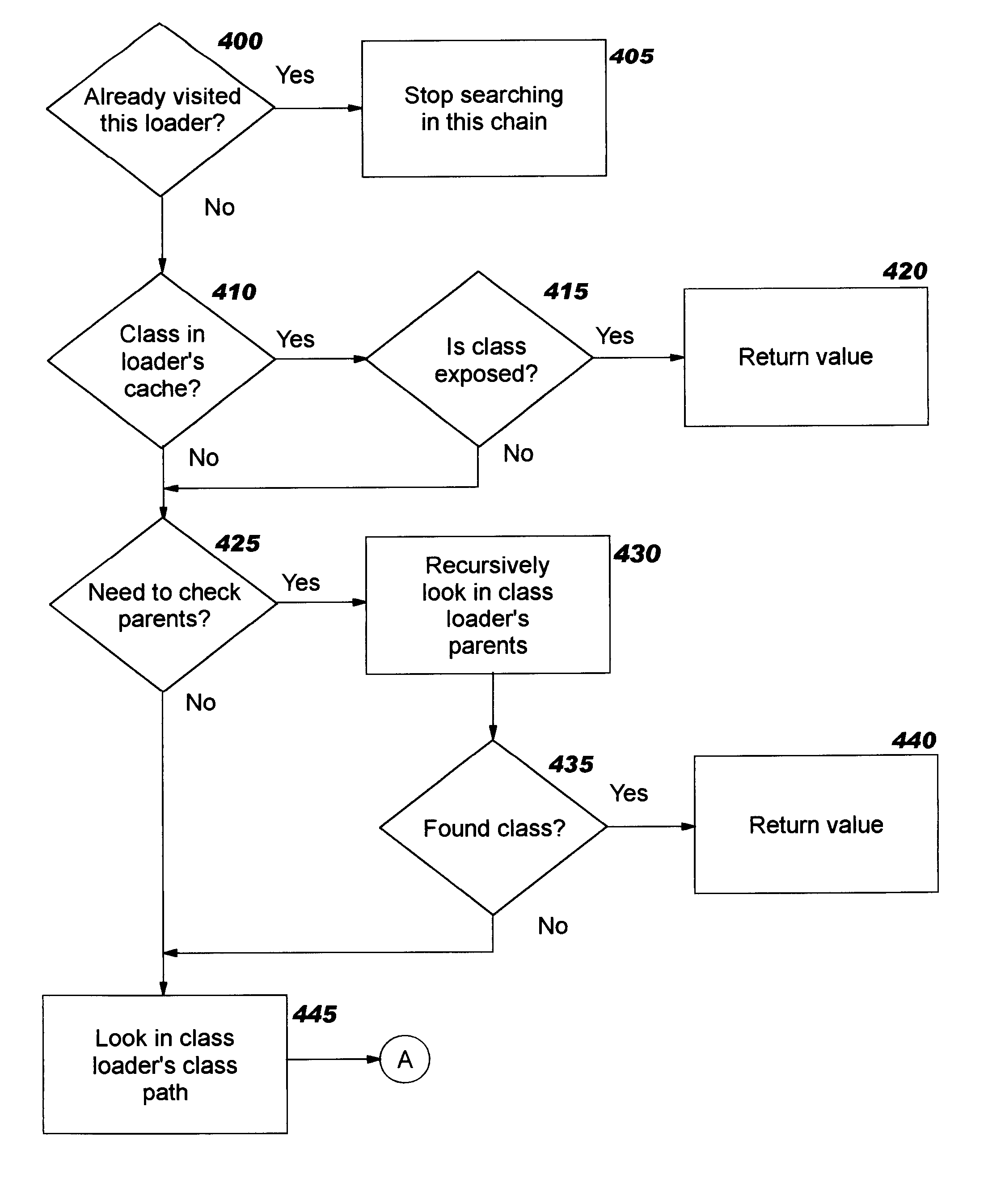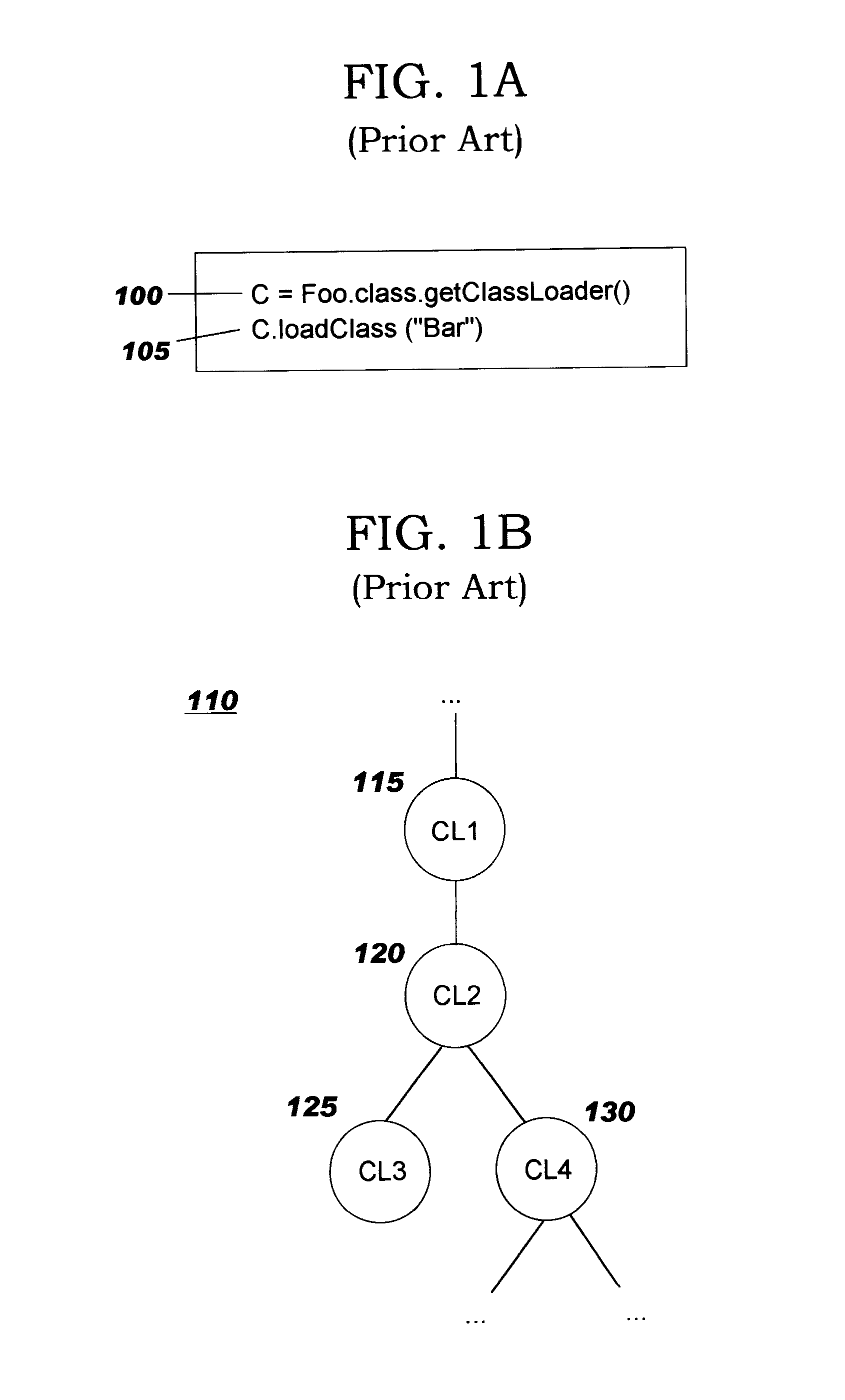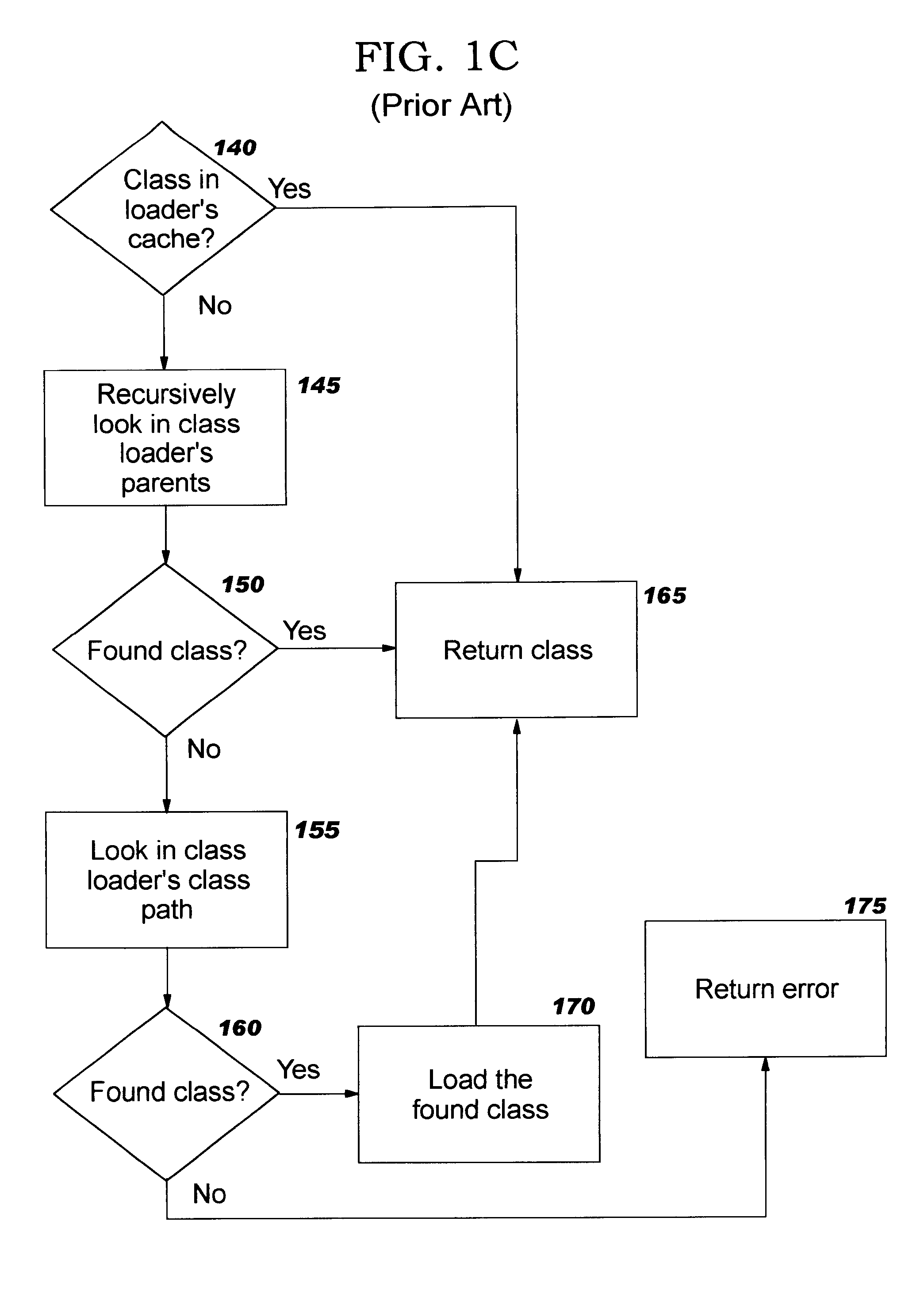Independent class loader for dynamic class loading
a loader and class technology, applied in the field of computer programming, can solve the problems of loading many classes, less than optimal solution, and complex composition of prerequisite components that cannot be supported
- Summary
- Abstract
- Description
- Claims
- Application Information
AI Technical Summary
Problems solved by technology
Method used
Image
Examples
examples 540 through 570
illustrate scenarios where Bar is found in a plug-in within the prerequisite graph for the Example plug-in. When Bar is defined in plug-in P, example 540 indicates that plug-in P is searched after failing to find Bar in the Platform plug-in. When Bar is defined in plug-in Q, example 550 indicates that plug-in P is again searched after failing to find Bar in the Platform plug-in; however, not finding Bar in this prerequisite of Example, the search continues. Plug-in R, which is the first-specified prerequisite of plug-in P, is skipped (see Block 485 of FIG. 4) because R is specified with export="false" (see element 340 of FIG. 3), indicating that R's classes will not be exported through P. Thus, the next available prerequisite in the extended class path is plug-in Q, where Bar is defined, and the search therefore ends successfully in this example.
example 560
illustrates a scenario in which Bar is defined in plug-in R, and is found there (even though R was skipped when traversing from plug-in P). In this case, after checking plug-in Q and failing to find Bar, Q's prerequisite S is checked next, also unsuccessfully. Next, the prerequisite R is reached when traversing from plug-in S, because the export setting is true in this case (see element 370 of FIG. 3). Because R exposes class Bar (see element 360), the search ends successfully. Example 570 covers the case where Bar is defined in plug-in S, and therefore proceeds as already described for example 560, up until locating Bar in S. Example 580 covers the case where Bar is not defined and is not available from any of the class loaders in the prerequisite graph. After searching using each class loader of the extended class path, Bar has still not been located, and the search fails. In example 590, the class Bar is actually located in plug-in T, which is not re-exported by P. As such, even ...
PUM
 Login to View More
Login to View More Abstract
Description
Claims
Application Information
 Login to View More
Login to View More - R&D
- Intellectual Property
- Life Sciences
- Materials
- Tech Scout
- Unparalleled Data Quality
- Higher Quality Content
- 60% Fewer Hallucinations
Browse by: Latest US Patents, China's latest patents, Technical Efficacy Thesaurus, Application Domain, Technology Topic, Popular Technical Reports.
© 2025 PatSnap. All rights reserved.Legal|Privacy policy|Modern Slavery Act Transparency Statement|Sitemap|About US| Contact US: help@patsnap.com



